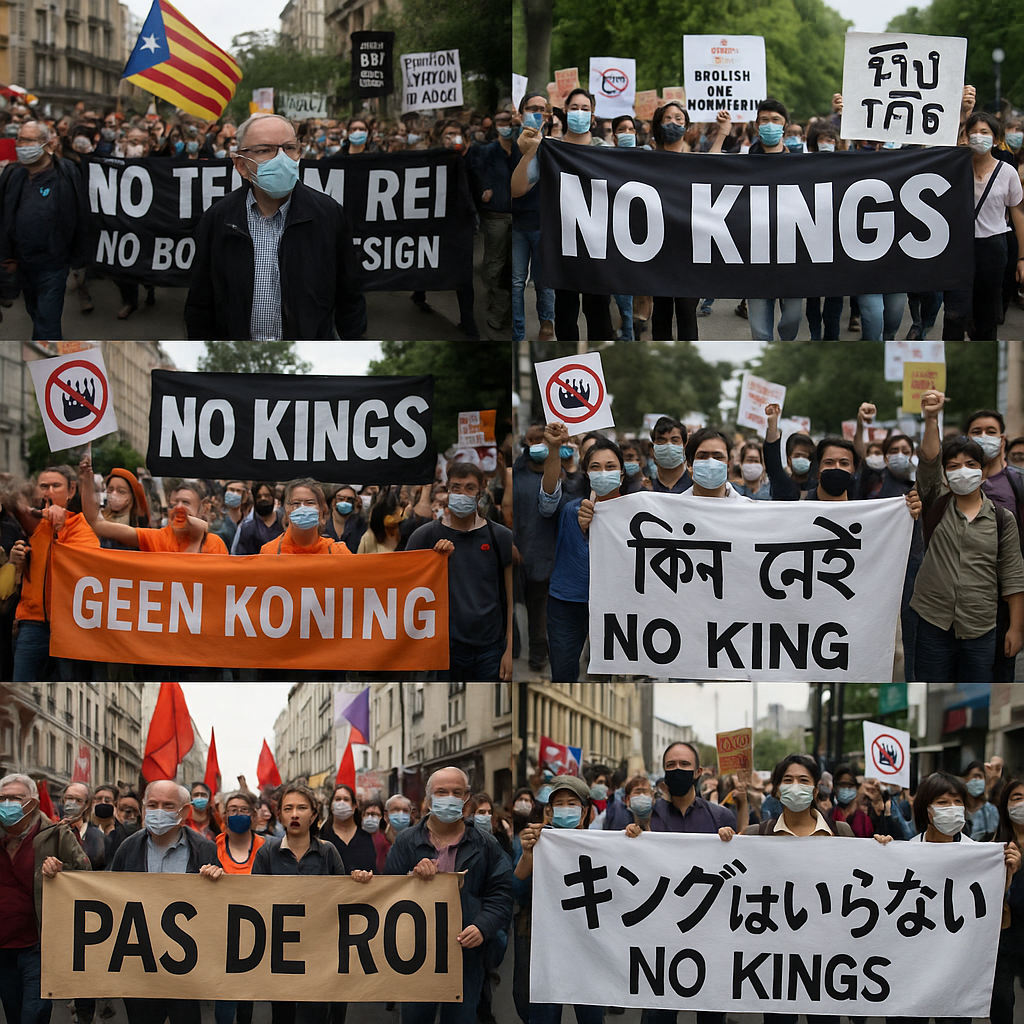International Rallies in Solidarity with U.S. Rallies

While the bulk of the “No Kings” protests unfolded across the United States, the movement found resonance in international communities as well — signaling that opposition to perceived authoritarianism and executive over-reach in Washington has an overseas echo.
🌍 Global Participation
The protest coalition behind No Kings, led in the U.S. by Indivisible and the 50501 Movement, also mobilized international chapters and diaspora groups under alternate banners such as “No Tyrants” or “No Dictators” when the word “Kings” ran the risk of confusing anti-monarchic protest abroad. (Wikipedia)
For example:
- In Canada, demonstrators gathered in Vancouver, and in Ottawa marched in front of the U.S. embassy under the name “No Tyrants.” (Wikipedia)
- Mexico City saw hundreds convene at Plaza Luis Cabrera in Colonia Roma before moving to the U.S. Embassy on Paseo de la Reforma, protesting U.S. immigration and deportation policies. (Wikipedia)
- In Europe, events took place in Brussels (Belgium), Prague (Czechia), Oslo (Norway), Lisbon (Portugal), Stockholm and Malmö (Sweden) — often under the “No Dictators” or “No Tyrants” name to avoid monarchy-related ambiguity. (Wikipedia)
- Thousands in Japanese cities, including Shibuya in Tokyo, joined the day-of-action under the shorthand “No Crowns! No Kings!” organized by Democrats Abroad and local expatriate networks. (Wikipedia)
🔎 Motivations Beyond Borders
International participation was driven by a mix of diaspora concerns and global solidarity. Many U.S. citizens abroad joined the rallies to protest policies such as mass deportations, national guard deployments, and what they described as a slide toward executive authoritarianism in Washington. In host countries, participants connected these U.S. developments to global concerns about strongman politics, erosion of democratic checks, and the rights of migrants and minorities. (The Guardian)
🧭 Style and Symbolism
The protests abroad mirrored the U.S. tone — mixing serious political rhetoric with creative and festive visuals. Protesters wore costumes, used banners referencing crowns, thrones and kings, and chanted slogans such as “No kings. No Crowns. We will not bow down.” (PBS) In many places, the alternative naming (“No Dictators”) allowed the movement to adapt to local contexts (especially in monarchies) while preserving the core message: resistance against consolidation of power. (Wikipedia)
🧩 The Bigger Picture
While the U.S. protests served as the main stage, the international dimension underscores two broader themes:
- Transnational solidarity — Even when a protest centers on U.S. politics, diasporas and global citizens see echoes of their own struggles in it.
- Symbolic export of protest culture — The No Kings movement leveraged global networks to signal that concerns over democratic backsliding are not simply domestic to the U.S.
✅ Early Outcomes & Questions
Though turnout abroad was smaller than in large U.S. cities, organizers believe the international presence amplifies the movement’s legitimacy and reach. One unintended benefit: media coverage abroad often depicted U.S.-style protest rather than local dissent, offering a different lens on American politics.
However, key questions remain: Will the movement sustain momentum? Will international participation transform into coordinated global pressure or remain symbolic? And most crucially — will the swell of activism translate into policy changes or electoral impact?
Would you like me to send a sidebar table summarizing the known international protest counts and countries (where available) for quick reference in your digest?
